Advertisement
ICA Disappoints With 'Foster Prize' Roundup Of Boston Art
What can be done about the Institute of Contemporary Art’s just opened “2013 James and Audrey Foster Prize Exhibition”? In the past the Boston museum has described it as a biennial showcase for “Boston-area artists of exceptional promise,” but ambition is tamped down this time around. In a prepared statement, Director Jill Medvedow is aiming just for an exhibition that “brings the strength and talent” of local artists to the museum.
It’s an impeccably displayed show that’s a yawn—despite the talent of some of the four artists involved. Worse, this is how the ICA presents our community to the world in the area’s most high profile exhibition of local talent.
"It was really important to me that it not be a best of Boston show. I wasn't interested in that. I really wanted the artists to be in some sort of dialogue with each other," ICA Chief Curator Helen Molesworth, who organized the show (100 Northern Ave., Boston, through July 14), said at a preview for reporters last week.
Hear her downplaying expectations? Can you imagine a curator of New York’s Whitney Biennial being so unambitious? Rather than the ICA acting as a leader in our community, it acts as if the “Foster Prize” is a chore.
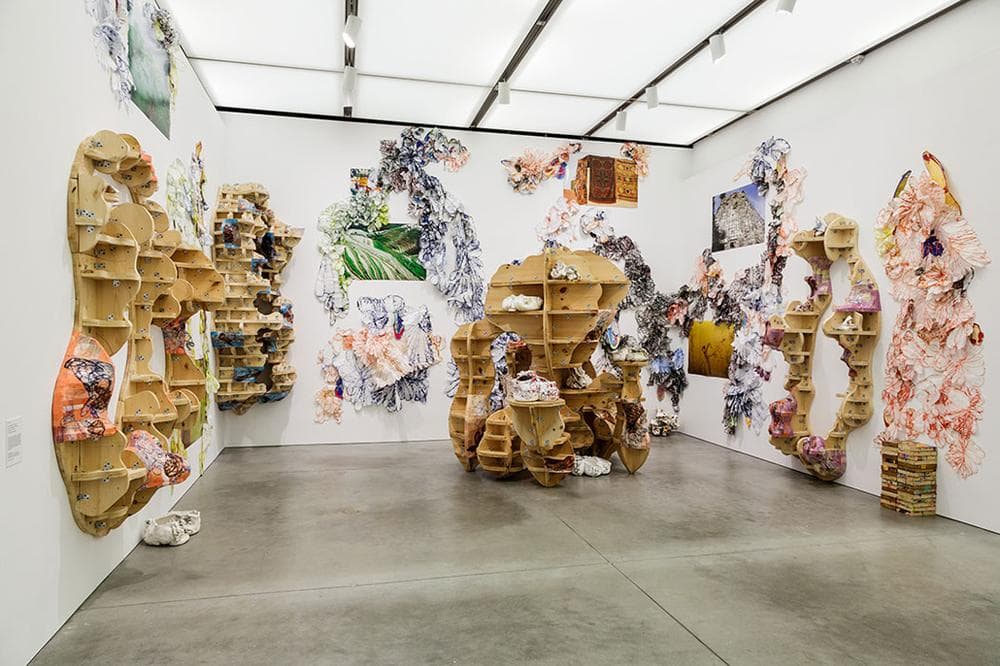
The exception to the show’s dullness is Somerville artist Mark Cooper’s “yu yu tangerine,” a luscious installation of lumpy, sketchy white ceramic pots displayed on unpainted wood shelving, studded with lots of metal brackets, that resembles traditional Chinese scholars’ rocks. Surrounding walls bloom with flowery cutout doodles and photos of mounds of red and yellow spices, forests, stepped hillsides, and bamboo scaffolding around a building. It’s ecstatic about the ripe, colorful fecundity of the world.
Cooper, who won the critics’ pick award for best installation at the 2011 New England Art Awards (an open-source regional awards that I oversee), has a similar installation in the Museum of Fine Arts’ “New Blue and White” group show, through July 14, that’s even stronger.
The “Foster Prize Exhibition” awards $25,000 to the top artist in the show, as chosen by a panel this year including artist Mark Dion, MIT List Visual Arts Center Director Paul Ha and Hammer Museum curator Ali Subotnick. But I don’t expect it will be going to Cooper when it’s announced this week.
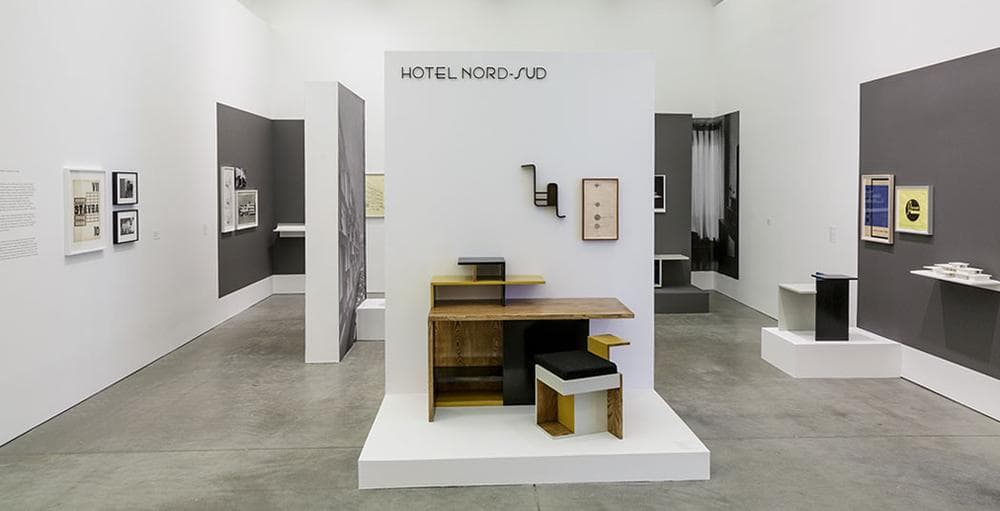
I predict the prize will go to Cambridge’s Katarina Burin for “Hotel Nord-Sud 1932-34: Design and Correspondence.” It’s a history-museum-style display of black and gray Modernist furniture, models, architectural drawings and what appear to be period photos documenting the career of Petra Andrejova-Molnar, a Czechoslovakian whose cantilevered, geometric designs are typical of Bauhaus architecture from between the world wars, but whose efforts purportedly vanished in the destruction of World War II. Wall texts go on about names and buildings and architects “emboldened by the utopian spirit of the age” and committed “to human progress and innovation."
It turns out that Andrejova-Molnar doesn’t actually exist. She’s an invention of Burin, though the installation offers no hint of the truth. I expect the prize jury will be wowed by her smartypants ruse. It is elaborately, handsomely developed … but pointless. And it’s so gray and dry that why would you bother to spend enough time with it to figure out the deception? Once you do realize that it’s all made up, there’s no corresponding revelation of meaning.
Like lots of conceptually-driven art today, rather than pointing us toward meaning, Burin offers the tiniest hints and expects us to fill everything in ourselves. Or for the curator to do it. Molesworth positions the project as a feminist statement about inserting a woman into the history of a field that excluded—and often still excludes—women. But the art’s only allusion to this is a mild wall text concluding, “Despite her youth and the dearth of opportunities offered to her gender, she secured positions in some of the region’s most prominent architectural offices.”
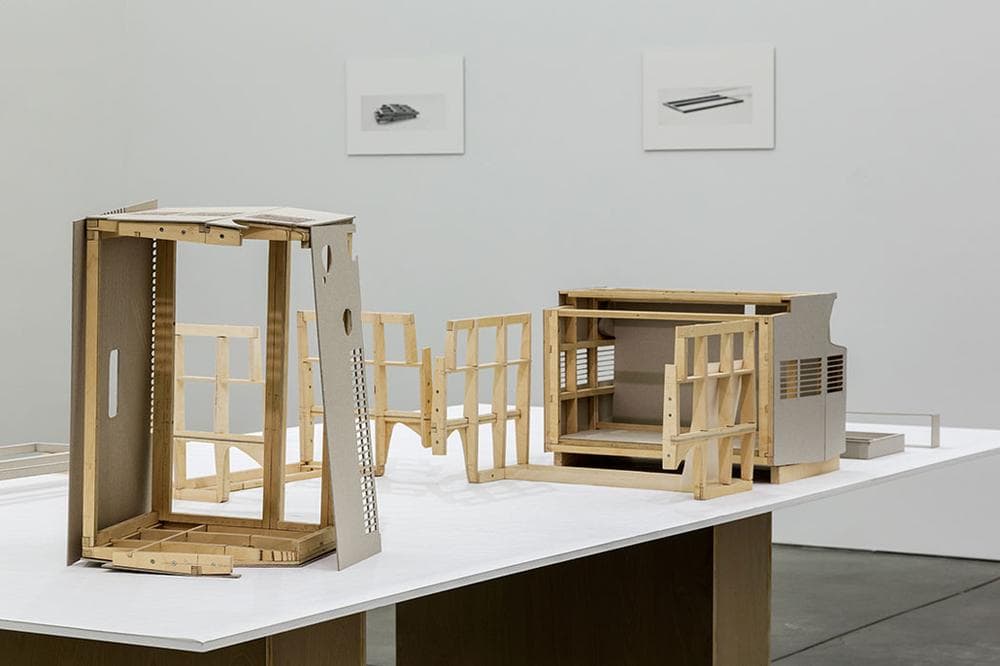
The rest of the “Foster Prize” show features Cambridge artist Sarah Bapst's precise recreations of dissected air conditioners as cool, neo-Minimalist sculptures and Revere filmmaker Luther Price’s hand-painted abstract slides clicking through five projectors.
Price is known for making hothouse montages of jittery, snippets of found, scratched, scarred, and often provocative footage. For example, his feverish 1989 film "Sodom” mashed up gay porn footage with bloody Catholic art. Here, Price’s art is not flattered by these dotted, weathered, bubbly, marbled slides (pictured at top and below) with glimpses of sports cars, a kid wading at the shore, and onion dome buildings. They feel too much like the classic Modernist experimental films by Stan Brakhage. As a filmmaker, Price is a more delirious and original artist than this. I can't help cynically suspecting that Price was remembered by the ICA because he was featured in the 2012 Whitney Biennial, where his slides were exhibited for the first time.
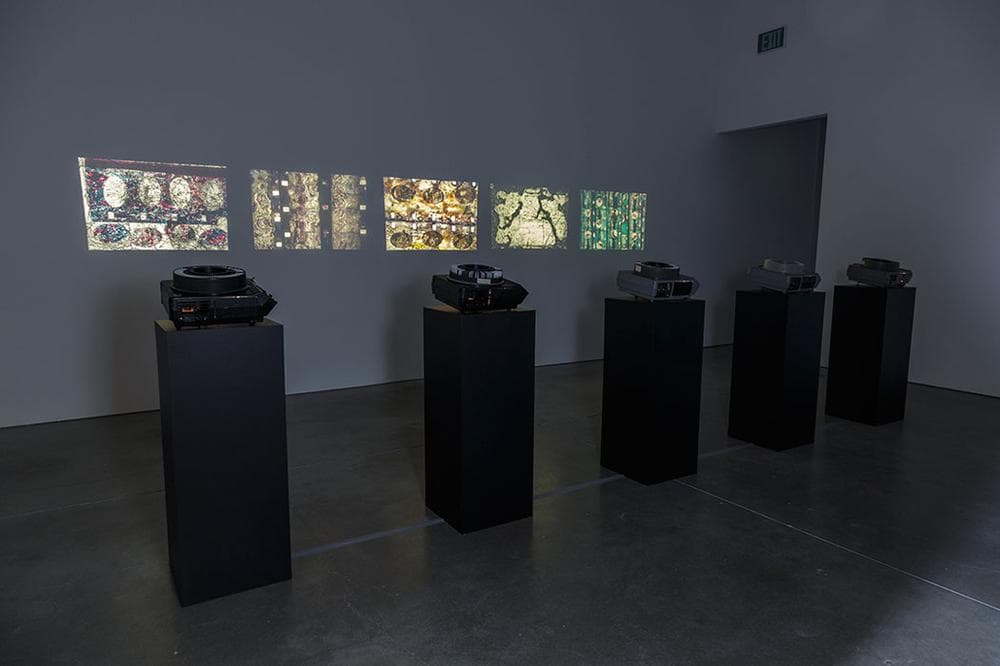
Molesworth is one of the most brilliant and increasingly influential curators in the nation. But she's a cerebral curator (her dissertation was on Marcel Duchamp), motivated by ideas. She really needs a theme to orient around. The one she cobbles together here—“they share an interest in architecture and building, the handmade and mechanically produced, and the role art plays in shaping and reimaging the world we have all inherited,” she writes in one wall text—is too nebulous to carry the show.
Also, Molesworth is not a curator who relishes finding new talent, which leaves her adrift in our community where most artists aren’t already stars. She’s not a visual curator or a sensual curator. I mean, two artists out of the four “Foster Prize” finalists basically work in just black and white. The show exposes her weaknesses.
Inevitably any prominent roundup of local talent like the “Foster Prize” becomes a pincushion for critique. That’s what happens when an audience cares. The reason the show disappoints isn’t because of what the show attempts. There’s talent enough in Boston to put on a thrilling show. The problem is that somehow the ICA doesn’t see it, doesn’t feel it.
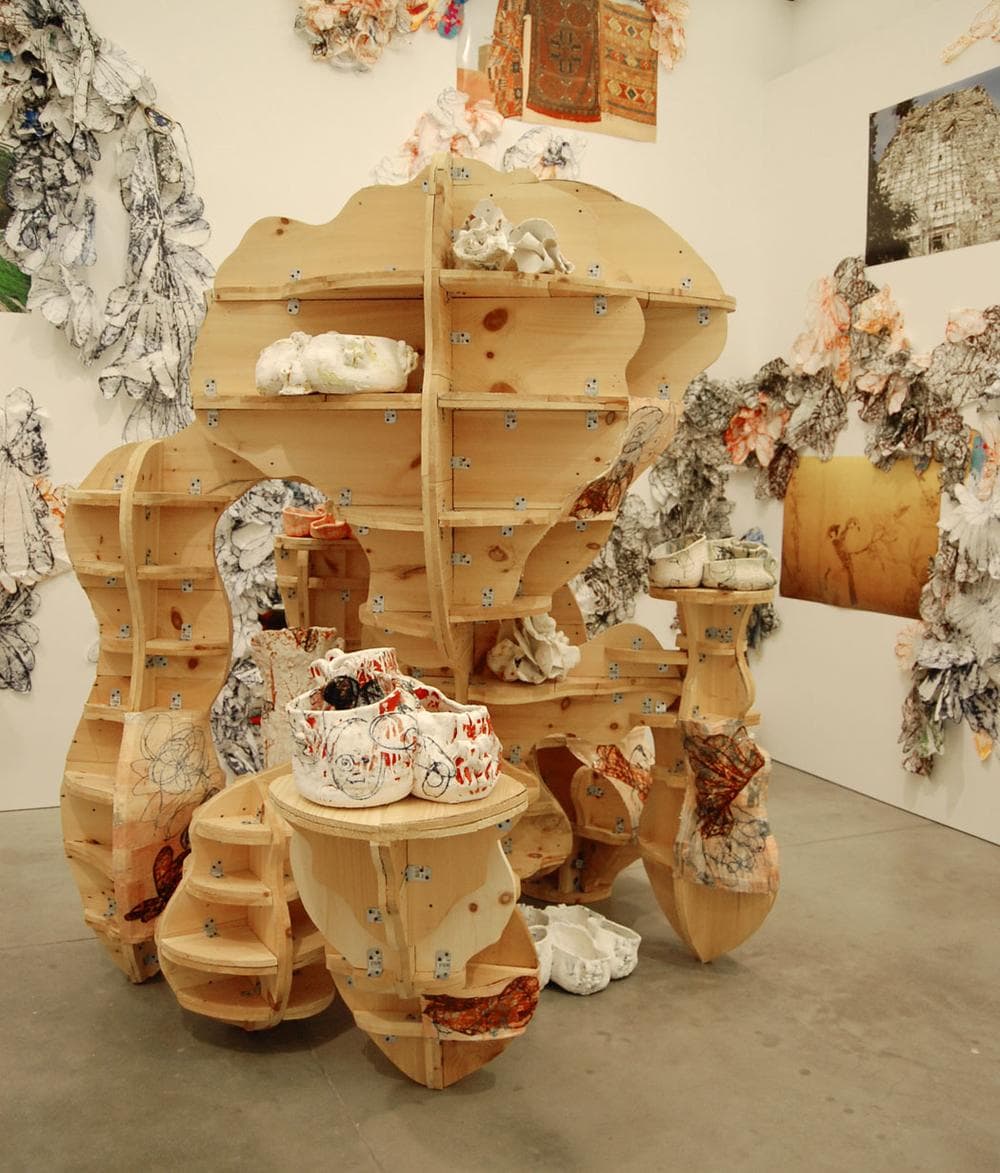
The Boston art scene is percolating with new durational and queer performance; with digital art like Anthony Montuori’s 1980’s style video games satirizing life in the Great Recession; with Jake Fried’s psychedelic freak out animations. Boston photography has long been at the forefront nationally. Meanwhile new venues, roving projects, outdoor installations, and shenanigans by the likes of Banditos Misteriosos are popping up.
Artists like John Osorio-Buck and Jane Marsching who helped make conceptually-driven, socially-inspired installation art prominent here in the first decade of the 2000s are busy now doing mature midcareer work. Folks like Abigail Anne Newbold, whose work is on view at New Hampshire’s Currier Museum of Art through July 14, have moved here from out of town and extended that tradition.
We need shows like the “Foster Prize.” But we need a show that’s as rich and smart and amazing as our community actually is. Done well by a curator who cares passionately about Boston art and is determined to find and foster the best art making here, it can spark a chain reaction of good things bubbling up, of people upping their game, of outsiders being attracted to that ferment and coming to join the party.
We are a community with a wealth of great places to see art, like the ICA. But great art communities aren’t remembered for their venues, they’re remembered for the art they produce.
This article was originally published on May 07, 2013.
This program aired on May 7, 2013. The audio for this program is not available.
